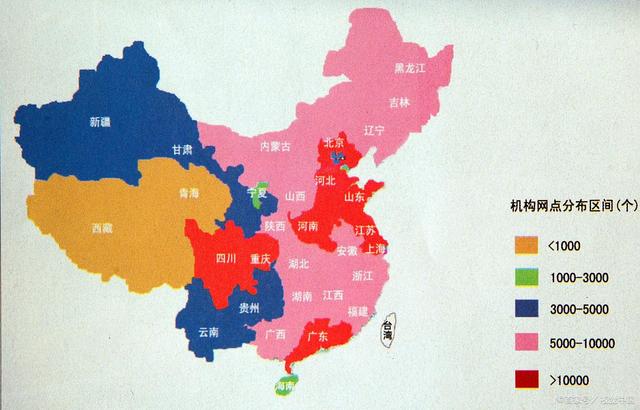The geographical overview of China that you must know

China is located in the eastern and northern hemispheres, on the west coast of the largest continent in Asia and the Pacific Ocean.
China borders 14 countries on land, including Vietnam, Laos, Myanmar, India, Bhutan, Nepal, Pakistan, Afghanistan, Tajikistan, Kyrgyzstan, Kazakhstan, Russia, Mongolia, and North Korea.
China has six neighboring countries across the sea, namely South Korea, Japan, the Philippines, Malaysia, Indonesia, and Brunei.
The northernmost point of our country is the centerline of the Heilongjiang main waterway at the northern end of Mohe County.
The easternmost point of our country is at the confluence of the centerline of the main waterway between Heilongjiang and Wusuli rivers in Heilongjiang Province.
The westernmost point of our country is the Pamir Plateau; The southernmost point is Zengmu Dunsha (not Huangyan Island, don't forget to mix it up).
China has a land area of approximately 9.6 million square kilometers, ranking third in the world (first is Russia, second is Canada, third is China, and fourth is the United States).
China's coastal areas, from north to south and from small to large, are the Bohai Sea, Yellow Sea, East China Sea, and South China Sea in sequence.
China is the country with the largest population in the world, with a total of 1.41 billion people according to the seventh population census.
The population boundary in our country is the Heilongjiang Tengchong line, with dense population in the southeast and sparse population in the northwest, such as Shandong Province, Sichuan Province, Henan Province, etc., and sparse population in Xinjiang, Qinghai, etc.
There are a total of 56 ethnic groups in China, including the Han ethnic group and 55 ethnic minorities.
The characteristics of land resources in our country include: firstly, a large absolute quantity and low per capita ownership; Secondly, there are diverse types and a small proportion of arable land: protecting arable land is a basic national policy in China, and it is relatively rare in plain areas; The third issue is uneven regional distribution, with prominent issues of protection and development: rapid urbanization, a large amount of urban land encroaching on a part of arable land, and many problems; Fourthly, the utilization situation is complex, with significant regional differences in productivity.
The characteristics of water resources in our country are: firstly, the per capita water resources are small, only one fourth of the world average level; The second is the uneven distribution of water resources, with a shortage in the south and north: cross basin water transfer and the South to North Water Diversion Project; The third issue is tight supply and low utilization rate.
The administrative divisions in our country are at the provincial, county, and township levels, without any cities.
China has 34 provincial-level administrative regions, including 23 provinces, 5 autonomous regions, 4 municipalities directly under the central government, and 2 special administrative regions.
The codes, names, abbreviations, and administrative centers of provincial-level administrative regions are:
11. Beijing: Beijing, Beijing;
12. Tianjin City: Tianjin, Tianjin;
13. Hebei Province: Hebei, Shijiazhuang;
14. Shanxi Province: Jin, Taiyuan;
15. Inner Mongolia Autonomous Region: Hohhot, Inner Mongolia;
21. Liaoning Province: Liaoning, Shenyang;
22. Jilin Province: Jilin, Changchun;
23. Heilongjiang Province: Hei, Harbin;
31. Shanghai: Shanghai, Shanghai;
32. Jiangsu Province: Jiangsu, Nanjing;
33. Zhejiang Province: Zhejiang, Hangzhou;
34. Anhui Province: Anhui, Hefei;
35. Fujian Province: Fujian, Fuzhou;
36. Jiangxi Province: Gan, Nanchang;
37. Shandong Province: Shandong, Jinan;
41. Henan Province: Henan, Zhengzhou;
42. Hubei Province: Hubei, Wuhan;
43. Hunan Province: Hunan, Changsha;
44. Guangdong Province: Guangdong, Guangzhou;
45. Guangxi Zhuang Autonomous Region: Guangxi, Nanning;
46. Hainan Province: Hainan, Haikou;
50. Chongqing City: Chongqing, Chongqing;
51. Sichuan Province: Sichuan, Sichuan, Chengdu;
52. Guizhou Province: Guizhou, Guizhou, Guiyang;
53. Yunnan Province: Yunnan, Yunnan, Kunming;
54. Xizang Autonomous Region: Tibet, Lhasa;
61. Shaanxi Province: Shaanxi, Qin, Xi'an;
63. Gansu Province: Gansu, Gansu, Lanzhou;
63. Qinghai Province: Qinghai, Xining;
64. Ningxia Hui Autonomous Region: Ning, Yinchuan;
65. Xinjiang Uygur Autonomous Region: Xinjiang, Urumqi;
71. Taiwan Province: Taiwan, Taipei;
81. Hong Kong Special Administrative Region: Hong Kong, Hong Kong;
82. Macau Special Administrative Region: Macau, Macau.
(The administrative code is the first two digits of our ID number number; the abbreviation is the Chinese characters on the license plate, and the administrative center is the provincial capital)









